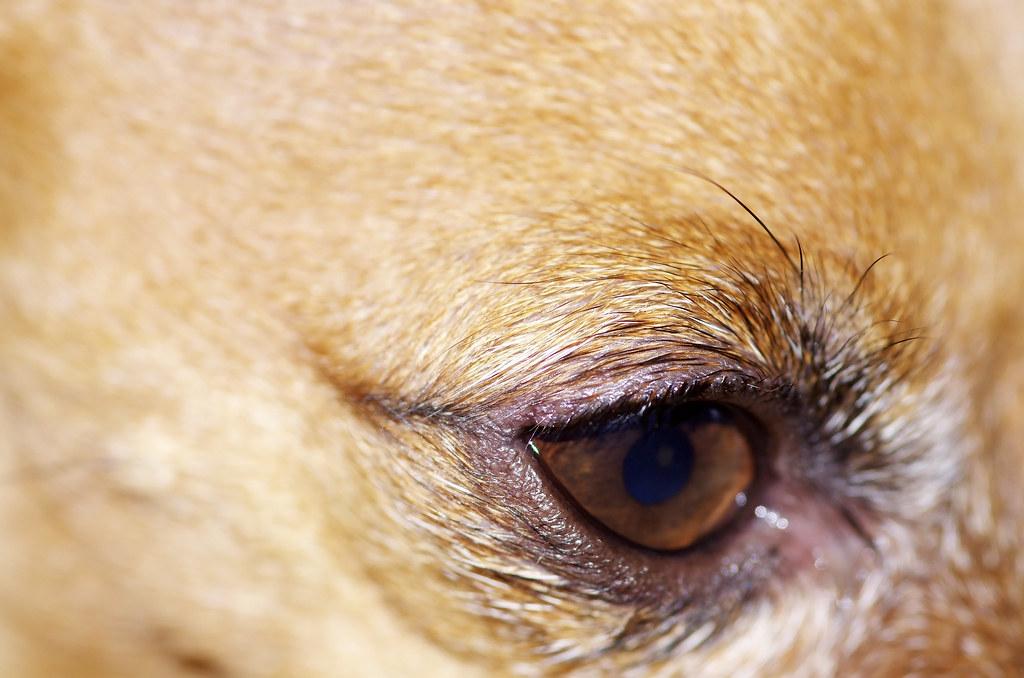The Most Common Eye Infections in Dogs



See files for Dogs
Infections in dogs are common and can become very dangerous if not recognized in time and treated properly. Some of these infections can be more or less mild, but others can permanently damage your dog's vision. Infections in dogs vary greatly, and all require proper veterinary treatment to avoid major problems. At any sign that your dog may be suffering from an infection, you should contact your veterinarian immediately.
In the following AnimalWised article, we will discuss the most common eye infections in dogs, their causes, symptoms, and treatment, so you know what to expect and can act accordingly.
Eye infection in dogs due to bacterial blepharitis
Blepharitis is a term used to describe a condition in which the outer skin and central parts (glands, muscles, and connective tissue) of the eyelids become inflamed. Typically, the inner surface of the eyelid (conjunctiva) also becomes inflamed. It is caused by excessive proliferation of bacteria. These bacteria reside on the skin and release toxins that cause irritation of the dog's ocular surface.
This eye infection can be associated with skin diseases such as atopy, demodictic mange, hypothyroidism or autoimmune diseases in adult dogs. However, in puppies, it is mainly associated with juvenile pyoderma. When blepharitis is caused by staphylococci, we can see small white granules on the edge of the eyelids that open and cause itching. This type of blepharitis is more common in poodles.
The most common symptoms of blepharitis in dogs include:
- Discharge from the eye (with mucus, water, or pus).
- Thickening and edema of the eyelids.
- Alopecia in the eyelid area or changes in pigmentation of the eyelid area.
- Tearing, presence of crusts or scales at the edge of the eyelid.
- Redness, itching and swelling of the eyelid margin.
Treatment of blepharitis in dogs
Treatment options depend on the underlying cause of your dog's blepharitis. Your dog may need to wear an Elizabethan collar to prevent rubbing or scratching. In most cases, treatment includes the administration of antibiotics, both orally and through eye drops. It is very important that we clean the eyes well with a gauze swab or cotton ball moistened with saline or warm water before application to soften and remove crusts so that the medication can penetrate better. Severe cases may require surgery.
If you want to learn more about this disease, please read this other article, where we explain in more detail what blepharitis in dogs is.

Eye infection in dogs due to styes
A stye, also known as hordeolum, is a bacterial infection of an oil gland in the eyelid. In dogs, they may occur as isolated or multiple nodules in both eyes.
There are several types of secretory glands in the eyelids that produce some tear components. Infection of one of these glands results in inflammation and swelling commonly referred to as stye. When such an infection occurs in multiple glands, it is called meibomitis or tarsal adenitis.
The most common bacteria in these infections are Staphylococcus spp. However, there are also diseases such as leishmaniasis that can cause inflammation with a similar appearance. Since it is a sporadic infection, it can occur at any age and in any breed.
The most common symptoms of stye in dogs are:
- Swelling and redness in an area affected of the eye.
- Reddened eyes.
- Lumps with pus inside at the edge of the eyelid.
One way to prevent the occurrence of stings in dogs is extreme hygiene measures. It is very important to clean the entire eye area regularly to prevent the spread of germs.
Treatment of styes in dogs
Basic treatment for a dog's stye usually involves washing the area and applying warm compresses, which can be done at home. Depending on the cause of the problem, medications that are available in the form of drops, ointments, chewable tablets or tablets sometimes help. In some cases, the veterinarian may need to remove the styrofoam. Both owners and veterinarians should take safety precautions during treatment, such as wearing gloves.
If you want to learn more about this disease, please read this other article, where we explain in more detail what you can do if your dog has stye.

Eye infection in dogs due to conjunctivitis
If our dog has red eyes, it is likely that he has conjunctivitis, one of the most common causes of eye infection in dogs. Conjunctivitis occurs when the conjunctiva, which covers the white part of the eye and the inside of the eyelids, becomes inflamed. The conjunctiva is not visible to the naked eye because it is translucent, very thin, and has a viscous consistency. However, when irritated, it appears red and causes itching, burning and constant tearing.
Its causes can be varied, such as allergy, systemic disease, a foreign body, or simply an eyelash growing into the eye. Generally, this eye disease does not permanently affect vision, although it can make vision difficult due to tearing and hypersensitivity to light. If bacteria are present, they are usually staphylococci or streptococci, which cause a mucopurulent secretion that can cause the eyelids to stick together and form crusts when dry.
The most common causes of conjunctivitis in dogs are:
- Redness of the white part of the eye.
- Excessive lacrimation.
- Eye lint, which may turn greenish if it is viral or bacterial conjunctivitis.
- Eye pain.
- Light hypersensitivity.
- Inflammation of the eyelids or blepharitis.
The most important thing in preventing conjunctivitis in dogs is good eye hygiene and a proper diet that keeps the dog's defenses in top shape.
Treatment of conjunctivitis in dogs
If you notice that your dog is showing symptoms of conjunctivitis, you need to see a veterinarian to diagnose the type of inflammation and find an appropriate treatment. For conjunctivitis that is not due to other systemic conditions, treatment frequently consists of cleaning the eye with saline and sterile gauze and administering oral or injected steroidal anti-inflammatory medications. Topical medications are not usually recommended because cutaneous absorption is difficult, and the eye area is very sensitive.
If you want to learn more about this disease, please read this other article, where we explain in more detail what conjunctivitis is in dogs.

Eye infection in dogs due to infectious keratitis
Infectious keratitis is inflammation of the cornea due to infection. If not treated in time, the infection eventually invades the intraocular structures, which can lead to lesions with irreversible vision loss. If the conjunctiva (inner layer of the eyelid) is also red, irritated or swollen, it is called keratoconjunctivitis. It is caused by a wound in the cornea contaminated with germs. In dogs, it is usually bacterial (bacterial keratitis). It also commonly occurs in dogs due to wounds or scratches by other dogs that eventually become infected.
The most common symptoms of bacterial keratitis in dogs are:
- Red and watery eye.
- Frequent scratching or blinking.
- Mucous or mucopurulent discharge in eye.
- Sensitivity to light or photophobia.
- Changes in the appearance of the eye, which may look very cloudy.
Treatment of bacterial keratitis in dogs
The first step is to determine the cause of the infection, which is probably bacterial (bacterial keratitis). The most common treatment is intensive use of antibiotic eye drops (at least 6 times daily). The veterinarian must determine the dose and frequency of application according to the severity and characteristics of the animal.
If you want to learn more about this disease, please read this other article, where we explain in more detail what keratitis is in dogs.
This article is purely informative. AnimalWised does not have the authority to prescribe any veterinary treatment or create a diagnosis. We invite you to take your pet to the veterinarian if they are suffering from any condition or pain.
If you want to read similar articles to The Most Common Eye Infections in Dogs, we recommend you visit our Eye problems category.








